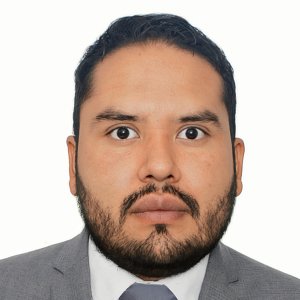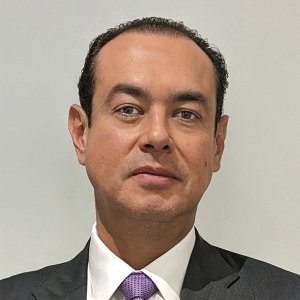
Unbalanced Human Capital Supplies
Mexico’s economic credentials are impeccable at a macro level. Designated an “emerging power” by the G8, and an upper-middle income country according to the World Bank’s indices, Mexico is undoubtedly one of the world’s major economies. A large and strong working population is essential for economic growth, but experts remain concerned about the country’s ability to look after its workers.
Despite Mexico’s upper-middle income status, the country suffers from a problem associated with developing nations: a shortage of doctors.
According to WHO statistics, the global gap of 7.2 million professional health workers in 2012 is likely to rise to 12.9 million with damaging consecuences. Overwork tends to shorten consultations, hence lowering the quality of medical care and increasing the price that patients have to pay due to limited competition.
In 2014, INEGI registered 281,000 physicians who are currently working professionally. According to the WHO, in 2011 Mexico had 2.095 physicians per every 1,000 citizens, with 2.5 doctors per thousand people being the US average. Both are below the WHO recommendation of 2.9. A greater problem faced by the Mexican healthcare system is a shortage of specialists and their uneven concentration in the Mexican territory. According to INEGI, Mexico currently has only 1.2 specialists per 1,000 people. “The shortage of specialists is due to a lack of planning from the central government, along with poor planning of physicians’ retirement plans,” says Dr. Enrique Graue Wiechers, Director of UNAM School of Medicine. According to Dr. Graue Wiechers, the health sector has developed unevenly, with excesses in some specializations and shortages in others. Medical students seem to have little interest in specialties which they perceive will not provide the high economic compensation and prefer those that they believe will, such as plastic surgery. Low salaries play a strong hand in the decision according to the National Union of Workers of the Ministry of Health (SNTSA), which states that specialists in some states earn MX$7,000 (US$455) a month.
A look at figures from the Mexico’s health-workers’ union, the National Union of Workers of the Ministry of Health (SNTSA), tells the full story. With specialists in some states earning MX$7,000 (US$467) a month, medical students and practitioners choose to go elsewhere, seeking work in well-remunerated sectors, such as plastic surgery, and higher-income states, fir example Mexico City.
Mexican universities also lack the capacity to prepare such specialists. Applications for single programs routinely surpass the 25,000 mark, when an entire medical school may only have the capacity for one quarter of that632 number. Meanwhile, the shortage of specialists continues in areas as oncology, geriatrics, neurology, psychiatry, and nephrology.
The load of patients per specialist is a heavy one. The Mexican Society of Oncologic Studies states that there are only 1,200 oncologists in Mexico responsible for treating 125,000 new cases of cancer per year. The problem is passed on directly to the patient, with 80,000 Mexicans dying every year of malignant tumors. “Of the more than 115 schools of medicine in Mexico, only eight teach oncology,” says Dr. Antelmo Abelardo Meneses García, Director General of the National Institute of Oncology (INCAN). Geriatric care is also lagging far behind, ten million elderly people require highly specialized care throughout Mexico, according to the National Institute of Older Persons (INAPAM). There are only 400 geriatric doctors available to look after them. Finally, chronic kidney failure affects nine million Mexicans, with only 800 nephrologists available to treat them.
 significant problem for the sector according to Dr. Teresa Corona Vázquez, Director General of the Nacional Institute of Neurology and Neurosurgery (INNN), “has nothing to do with the lack of specialists. The issue lies in the concentration of specialists around the urban centers of Mexico City, Guadalajara, and Monterrey.” Patients living in other states do not have access to these resources, forcing patients – including those requiring emergency care – to travel to these three cities. The burden weighs heavily on the country’s National Institutes of Health, which struggle to treat such a large number of individuals. Physicians often prefer to stay in large cities, as job opportunities tend to gravitate around urban hubs. According to Dr. Graue Wiechers, “doctors are unwilling to travel to places where they feel unsafe, or where they feel they will not be able to grow professionally and economically.” Dr. Corona Vázquez, of the INNN, agrees, with reference to a high-specialty Hospital in Tapachula, Chiapas, whose state-of-the-art equipment is not enough to attract specialists to the area. Chiapas is not the only state affected: Oaxaca, Veracruz, Guerrero, the State of Mexico, Quintana Roo, Hidalgo, and Puebla report a steep specialist deficit.
significant problem for the sector according to Dr. Teresa Corona Vázquez, Director General of the Nacional Institute of Neurology and Neurosurgery (INNN), “has nothing to do with the lack of specialists. The issue lies in the concentration of specialists around the urban centers of Mexico City, Guadalajara, and Monterrey.” Patients living in other states do not have access to these resources, forcing patients – including those requiring emergency care – to travel to these three cities. The burden weighs heavily on the country’s National Institutes of Health, which struggle to treat such a large number of individuals. Physicians often prefer to stay in large cities, as job opportunities tend to gravitate around urban hubs. According to Dr. Graue Wiechers, “doctors are unwilling to travel to places where they feel unsafe, or where they feel they will not be able to grow professionally and economically.” Dr. Corona Vázquez, of the INNN, agrees, with reference to a high-specialty Hospital in Tapachula, Chiapas, whose state-of-the-art equipment is not enough to attract specialists to the area. Chiapas is not the only state affected: Oaxaca, Veracruz, Guerrero, the State of Mexico, Quintana Roo, Hidalgo, and Puebla report a steep specialist deficit.
Varying strategies have been proposed to solve this problem. The director of UNAM’s medical school, believes that this is a joint problem for the Treasury and the Ministry of Health. “The health sector has to stimulate migration to those areas, perhaps by establishing different payment plans. The whole sector must be better planned to solve this problem.” Dr. Corona Vázquez recommends strengthening health services in every single state in order to increase the number of general and specialty hospitals, so that hospitals in neglected states can provide competitive employment offers. Raising salaries appears to be one way forward identified by important players. The National Union of Workers of Social Security (SNTSS), in conjunction the State Delegation of Chihuahua and the Business Coordinating Council of Chihuahua, has proposed raising salaries by 46% to attract specialists to that state. One unconventional alternative proposed by Dr. David Kershenobich Stalnikowitz, Director General of the National Institute of Medical Science and Nutrition Salvador Zubirán (INCMNSZ), incorporates telemedicine. “General physicians can request specific information from remote specialists which reduces the necessity of having specialists spread all over the country.”
















